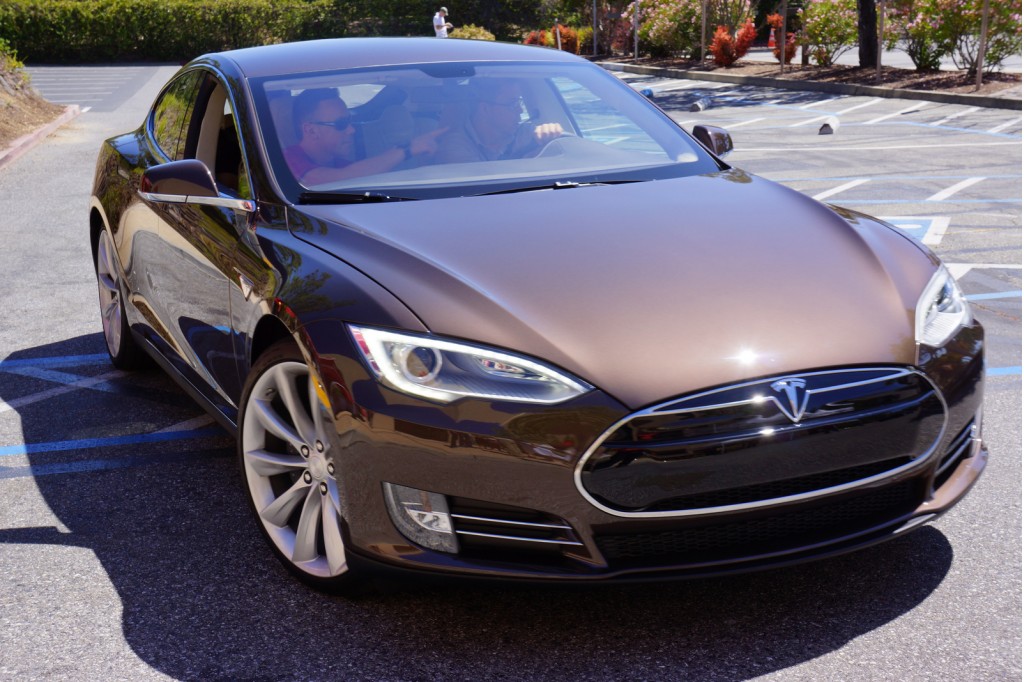With its massive 17-inch touchscreen display and very few secondary controls, the dashboard of a Tesla Model S electric car looks like nothing else on sale from any other automaker.
The differences continue beneath the surface, where the Model S dashboard appears to borrow heavily from the designs of smartphones and tablets.
DON'T MISS: Puzzling New Power Numbers For Tesla Model S: What's the Deal?
That's according to research firm IHS, which recently bought a 2013 Model S just so it could tear the car apart and peer inside.
The company didn't sacrifice of a pristine--and valuable--electric car, though. According to Re/code, the Model S was totaled in a crash, but all of its dashboard electronics remained intact.

Tesla Model S
So what did the dissection reveal?
While most automakers farm out the development of their in-car electronic hardware, it seems Tesla did quite a bit of the work itself. Many components had Tesla branding on them, researchers said.
IHS says this is because the Model S central touchscreen is so much larger than the ones in other cars, requiring a significant amount of custom fabrication to support it.
Of course, Tesla still relies on third-party suppliers for certain components that it can't manufacture itself.
RELATED: Michigan Gov Snyder Signs Anti-Tesla Bill Called 'Corrupt Politics At Its Worst'
That includes the touchscreen itself.
The one in IHS's sample car came from Innolux, but the researcher firm believes other companies including Japan Display--a collaboration of Sony, Toshiba, and Hitachi--supply Tesla with screens as well.
The Model S features two Nvidia Tegra 3 chips that handle primary computing for the touchscreen and instrument cluster.
These chips are similar to ones used in smartphones, but Nvidia has also been pitching them to the automotive market, getting attention from other carmakers such as Audi.

2013 Tesla Model S with owner Bruce Sharpe in Canada
And the capacitive glass overlay is made by the same company that made the overlay for the first Apple iPhone.
However, it's worth noting that changes to the Model S and its display hardware may well have been made since the IHS test car was built early in 2013.
SEE MORE: Tesla Reveals 'D' All-Wheel-Drive Model S, 'Autopilot' Feature
Instead of waiting for a new model year, Tesla adds updates to its production cars as soon as they are ready, so cars built even a few months apart can be somewhat different.
Cars built since late September this year, for example, have also been equipped with the hardware for Tesla's new driver-assistance systems.
That suite of systems was unveiled alongside the dual-motor "D" all-wheel drive system earlier this month.
_______________________________________________












